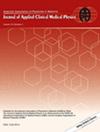DICOM attribute manipulation tool: Easily change frame of reference, series instance, and SOP instance UID
Abstract
Purpose
In radiation oncology, the integration and registration of multiple imaging modalities is a crucial aspect of the diagnosis and treatment planning process. These images are often inherently registered, a useful feature in most cases, but possibly a hindrance when registration modifications are required. To break this registration requires expert knowledge of file structure or specialized software, posing challenges, and potential errors in accidentally or unnecessarily changing other attributes. Barring these changes, the clinic would have to make do with imprecise registrations which compound overall treatment uncertainty.
To address these issues, we present a novel tool designed to simplify the task of changing three often edited attributes: the frame of reference, the series instance unique identifier (UID), and the SOP instance UID. The tool features an intuitive user interface that empowers practitioners, regardless of their expertise, to effortlessly modify these three commonly edited values.
Validation methods
Publicly available brain MRI and TCI lung 4DCT images were used to evaluate the software. The ability to change the frame of reference, series instance identifier, and SOP instance identifier using the program was evaluated with both the RayStation treatment planning system and MIM.
Software format and usage notes
The program is written in C#, easily distributed via GitHub and is compatible with any Windows computer with .NET 4.8 (the standard as of 2023).
Potential applications
This innovation holds promise for improving the overall workflow efficiency and safety within radiation oncology and radiology, where breaking the frame of reference or changing the series/SOP UIDs is a common occurrence.

 求助内容:
求助内容: 应助结果提醒方式:
应助结果提醒方式:


